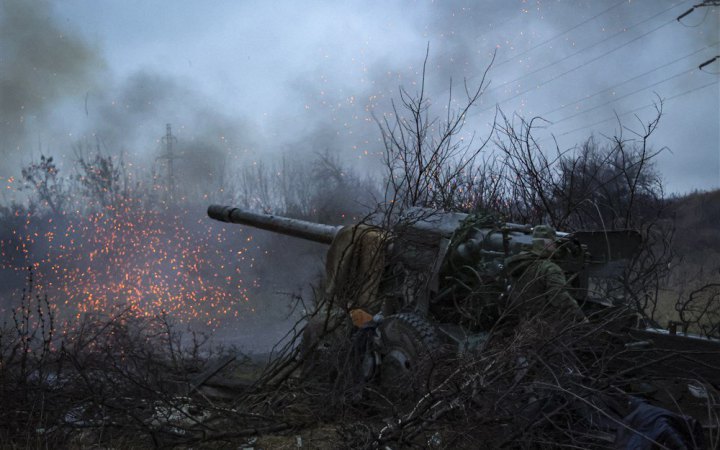Russia planned to invade Ukraine within 10 days, and then occupy and annex it by August 2022. Its plan included a deceptive manoeuvre to distract the Ukrainian Armed Forces away from Kyiv, which would facilitate a rapid seizure of the capital.
This deception plan largely succeeded, for the Russians achieved a 12:1 force ratio advantage north of Kyiv. However, the very operational security led Russian forces to be unprepared at the tactical level to execute the plan effectively, the report of the British analytical centre "Royal United Services Institute for Defence and Security Studies" (RUSI) says.
The tactical competence of the Russians proved to be significantly lower than expected.
The report added that Ukraine successfully evaded Russia’s initial wave of strikes by dispersing its arsenals, aircraft and air defences. Conversely, the Russians succeeded in engaging 75% of static defence sites in the first 48 hours of the war.
The Centre noted that the difference in numbers between Russian and Ukrainian artillery was not as significant at the beginning of the conflict, with just over a 2:1 advantage. In particular, the Russians had 2,433 barrel artillery systems against 1,176, and 3,547 multiple-launch rocket systems against 1,680. Ukraine maintained artillery parity for the first month and a half and then began to run low on munitions so that, by June, the Russian Army had a 10:1 advantage in the volume of fire.
Russia’s strategic objective was the subjugation of the Ukrainian state. This plan was formulated first and foremost by Russia’s special services and a core group within the presidential administration, supported by senior officials in the Ministry of Defence.
Russia’s military build-up against Ukraine began in March 2021 when large numbers of conventional troops were added to existing forces along Ukraine’s borders. This was done, among other things, to test the reaction of Ukraine's Western partners. The conception of the Russian invasion, therefore, was developed around several key assumptions:
- Speed is critical to success to render the response of the international community irrelevant.
- The removal of Ukraine’s leaders would remove the barrier for pro-Russian Ukrainians to vocalise support for the occupation.
- Controlling heating, electricity and finance would be an effective means of controlling the apathetic majority of the Ukrainian population.
- The Russian military could defeat the Ukrainian military on the battlefield.
Accordingly, the FSB, the Ministry of Defence and the Presidential Administration developed a plan to achieve Putin's strategic goal. Its main goals were:
- Degrade Ukraine’s ability to defend itself by destroying its air, maritime and air-defence forces.
- Defeat Ukrainian Ground Forces by fixing them in Donbas.
- Diffuse Ukraine’s will and capacity to resist by eliminating Ukraine’s political and military leadership and occupying critical centres of political and economic power.
- Deceive the Ukrainian government as to the time, location, scope and scale of Russia’s invasion.
Initially, Russia was not going to destroy Ukraine's critical infrastructure because it expected that it would need it after it seized power.
Russian troops were divided into groups and were to seize the administrative centres of the left bank of the Dnipro, as well as Kyiv, Mykolaiv, Kherson and Odesa. The northern group was to focus on Kyiv.
One group was formed in Belarus and used the tactical sign ‘V’. They were to attack Kyiv from the right bank. The second group was formed in Bryansk - O - and had the order to surround the capital from the left bank. The Southern Military District Command Post commanded units with the tactical designation "Z in a square", it was ordered to attack from the occupied Crimea to establish control over the North Crimean water canal, Enerhodar and Zaporizhzhya nuclear power plant, surround Mariupol, take control of the bridges across the Dnipro and advance along the right bank to Voznesensk to seize the South Ukrainian nuclear power plant. The group with the symbol Z was to focus on Donbas.
Analysts added that Russia's plan did not provide for the option of its defeat at all. At the same time, a significant part of the military was not informed that the purpose of the invasion was to occupy the state.
In addition, the Russian army was to kill Ukrainians who disagreed with the occupation. Moscow believed that Ukraine's leadership would either flee or be eliminated during the invasion. It was assumed that the shocked population would not be able to mobilise, and protests could be suppressed by force. This was to be done by the Russian National Guard.
The Royal United Services Institute for Defence Studies is a British analytical centre specialising in international security and military affairs. It was founded in 1831 on the initiative of Field Marshal Arthur Wellesley.








